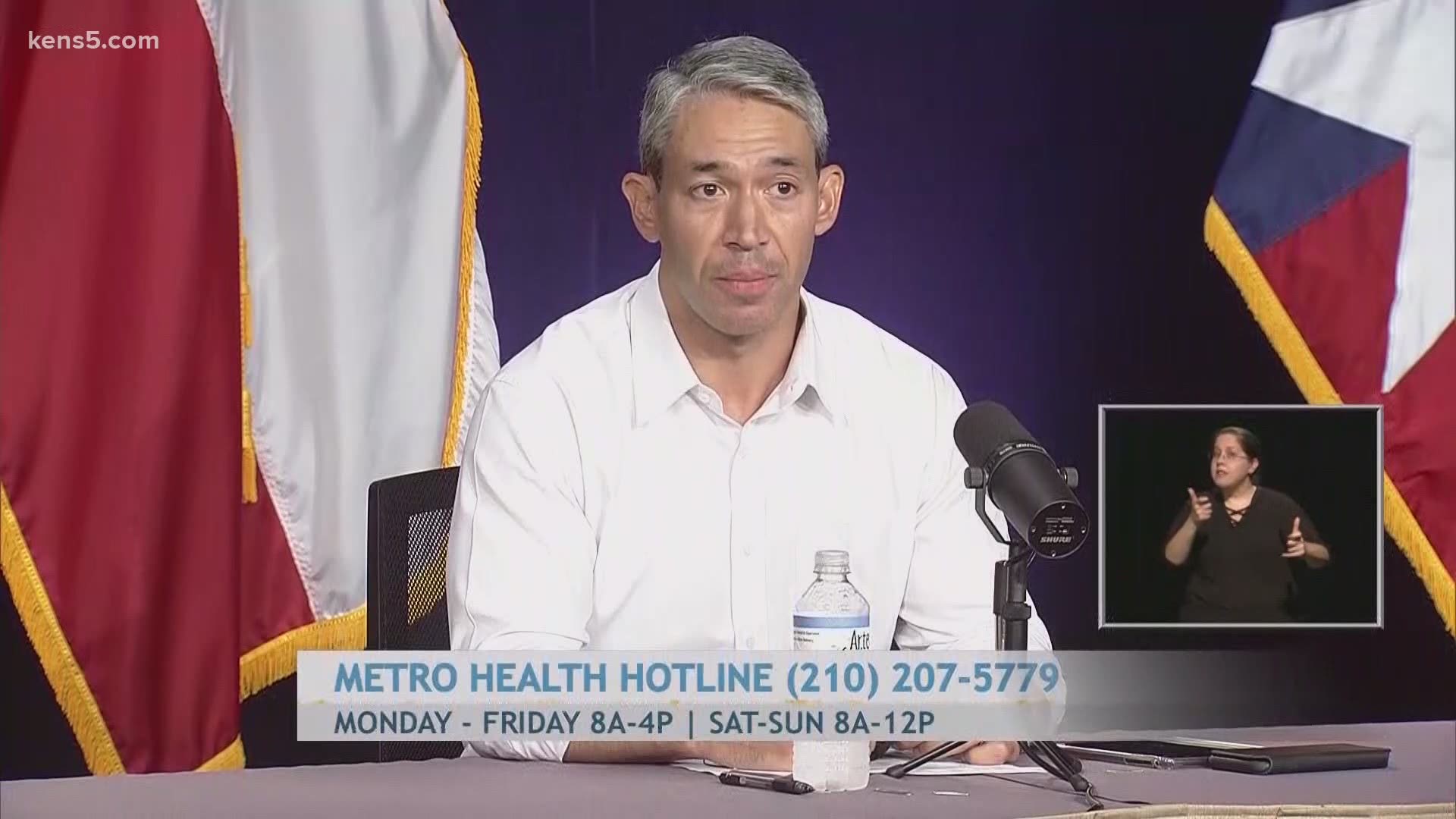SAN ANTONIO — On Monday night, city and county leaders responded to what they’re calling an exponential surge in positive coronavirus cases.
“We are moving fast, too fast, and now we're having to play catch up because the virus has gained a foothold in all the urban areas of Texas,” said Mayor Ron Nirenberg.
Nirenberg not hiding his concern after reporting an additional 274 positive coronavirus cases in Bexar County, bringing the total number of positive cases to over 7,100.
Nirenberg also pointed out a warning indicator, the positivity rate has doubled in the last week, now at close to 17 percent.
“No one is immune either. You know, our new rate of infections since June 2nd, 64 percent of our cases are under 40,” said Nirenberg.
City health officials said 57 percent of new cases are attributed to close contact.
And, with an uptick in positive cases, there’s also a jump in hospitalizations.
Nirenberg said the rate of hospital admissions has doubled, and the number of patients on ventilators has tripled.
“Hospital bed capacity, staffed bed capacity is fast diminishing. It's at 28 percent now. And if we keep seeing the same trend of new infections that we've been seeing in the past two weeks, we are going to be in deep trouble pretty soon,” said Dr. Anita Kurian with San Antonio Metro Health’s Assistant Director Communicable Diseases Division.
Kurian said according to one projection model, if we continue to see these high numbers, the county could see an enormous spike by the end of the summer.
“Last week we had 388 new infections on an average, each single day. So, if we continue to see that trend by that model, by the UTSA model, we may see about 910,000 cases by August,” said Kurian.
With Bexar County’s population sitting at just over 2 million, that’s one out of every two people infected.
A sobering forecast leading city and county officials to remind people to wear a face covering and keep physically distancing to contain the spread.
“More people will end up in critical condition if proper action is not taken to prevent the spread of this disease from devastating our communities, our health and our livelihood,” said Nirenberg.
Nirenberg said the demand for testing has also increased and officials are responding to the need, increasing testing capacity to 5,200 people a day.
He also said they’ve expanded the opportunity for walk-up testing to six days a week, Monday through Saturday.
Health officials also stressed Monday night the need to respond to contact trace investigators.
Kurian said 81% of investigations are still open because they are waiting for people to call investigators back.
“The only way we can halt the transmission of this virus in our community is by promptly identifying these cases and promptly isolating and containing the exposed individuals,” said Kurian.

